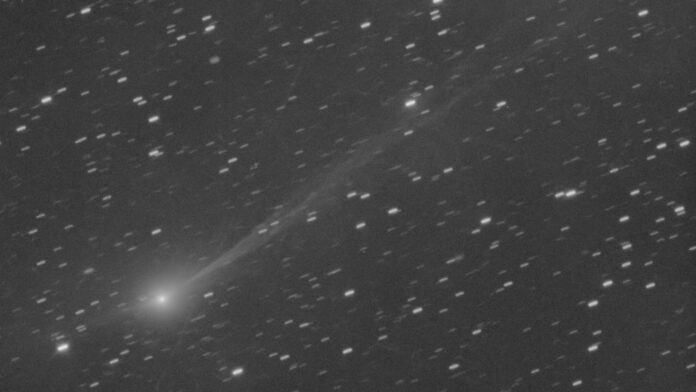An interstellar comet, designated 3I/ATLAS, has been captured in remarkable new images after making a close approach to the Sun on October 29th. These observations, including a striking image taken by astronomer Gianluca Masi, reveal details of the comet’s structure as it speeds away from our solar system.
A Rare Visitor From Beyond
Comet 3I/ATLAS is only the third confirmed interstellar object to visit our solar system. The first was the mysterious object 1I/’Oumuamua in 2017, followed by the more typical comet 2I/Borisov in 2019. Its discovery in July of this year sparked excitement among astronomers due to its origin outside our Sun’s gravitational influence.
What Makes This Comet Special?
The comet’s recent close pass, or perihelion, around the Sun provided an opportunity to study its behavior under intense solar radiation. Masi’s image, created by stacking 11 separate exposures, shows a bright central nucleus enveloped by a glowing coma—a cloud of gas and dust. The comet’s ion tail is particularly striking, appearing as a wispy, spectral structure sculpted by the solar wind: the stream of charged particles constantly emitted by the Sun.
“Knowing it came from so far away adds a very special flavor to the observations,” Masi explained to Space.com.
This highlights the value of studying these rare interstellar visitors, as they offer insights into the composition and evolution of other star systems.
New NASA Images Coming Soon
NASA is scheduled to release additional images collected from multiple spacecraft during a press conference today (November 19th). These new views promise even greater detail and a broader understanding of this unique celestial traveler.
The observation was made using a 10-inch telescope in Italy, under clear atmospheric conditions. The comet was moving through the constellation Virgo at the time.
The study of interstellar comets like 3I/ATLAS is important because they provide a unique opportunity to analyze materials that originated from other star systems, potentially revealing clues about the formation and evolution of planets beyond our own.





























